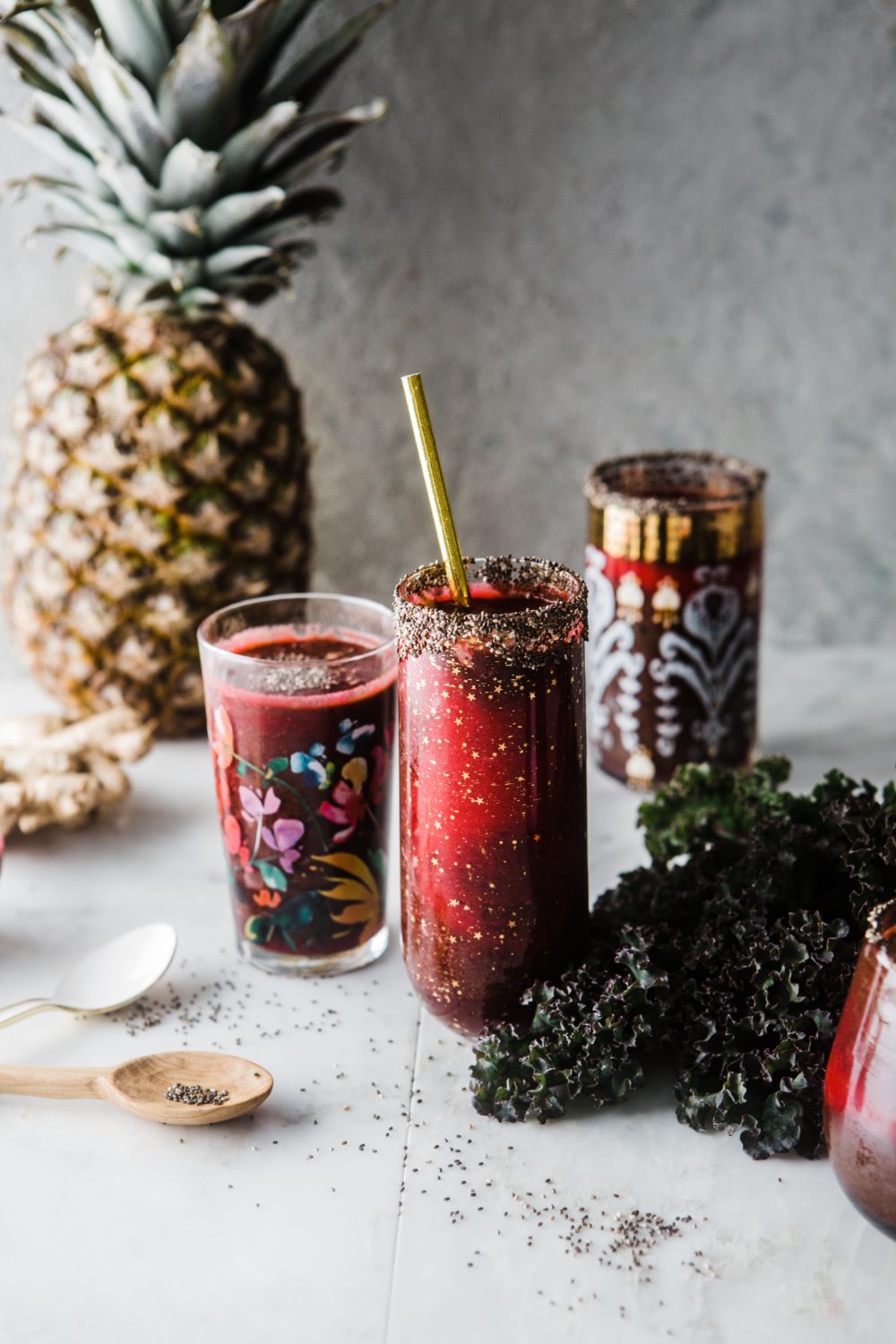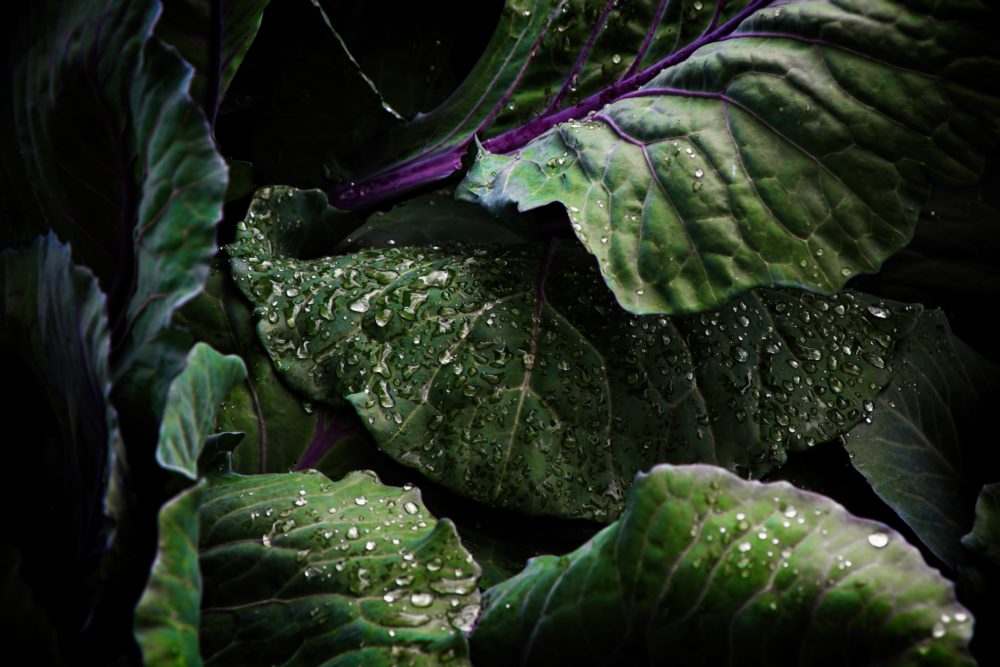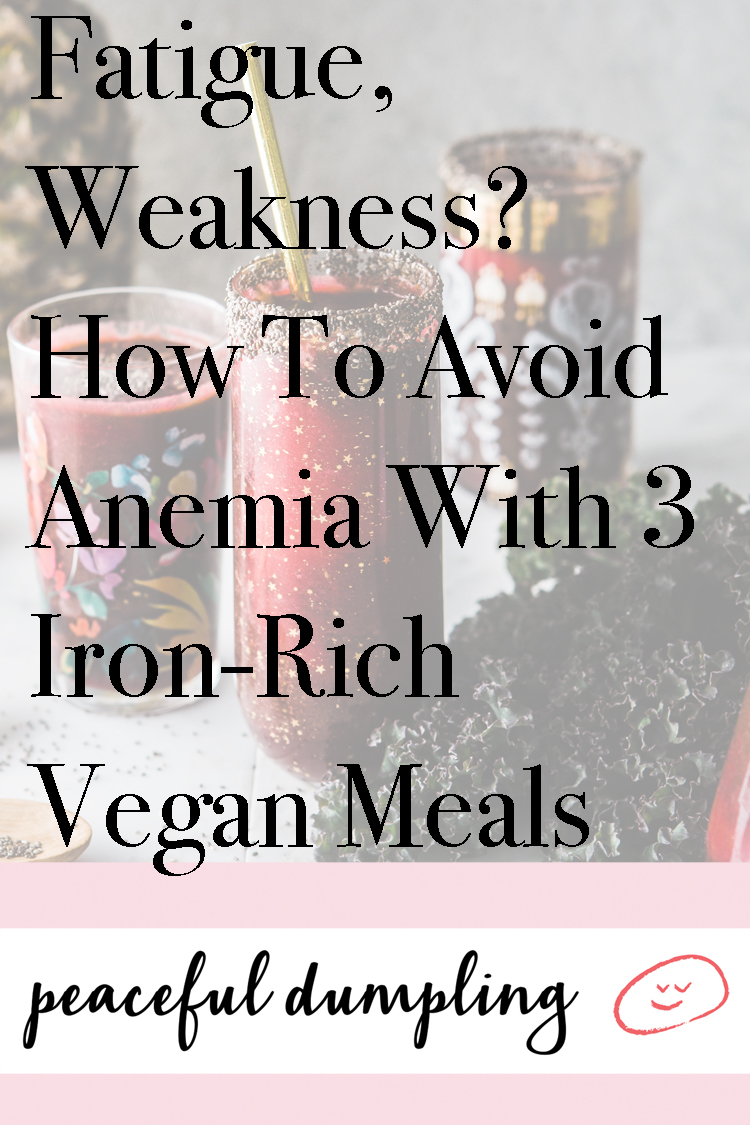Pursuing daunting goals is the name of my Millennial game. So, I was less than surprised that I eventually developed the desire to go vegan despite having a medical history of iron-deficiency anemia; I was as amused by the irony of my latest ambitions as I was motivated by the faith that I could achieve them. I consulted multitudinous databases and sources to strategize my approach to this impending dietary shift, and what I learned as a result of my search was invaluable.
Today, I write for those introducing themselves to veganism while battling chronic iron-deficiency anemia. While it is true that maintaining healthy iron stores is something of a challenge on a vegan diet, it is equally true that plant-based sources can be sufficient to maintain these stores. I would like to explore the intricacies and mechanisms of iron absorption in the body to encourage an increased understanding of how a vegan diet can be optimized to promote maximal iron absorption.

At the core of iron-deficiency anemia is the body’s decreased ability to deliver oxygen from the lungs to the tissues, due to decreased iron levels in the blood. In the human body, iron is found in hemoglobin, which is a key molecular component of red blood cells. Red blood cells use the available iron atoms within to bind to incoming oxygen molecules from the lungs, eventually releasing the oxygen where needed throughout the bloodstream. Low iron levels in the bod, therefore, translate to the red blood cells’ decreased ability to bind and transport oxygen to all bodily cells in a condition known as anemia. Anemic symptoms include fatigue, memory loss, moodiness, low motivation, and a decreased ability to concentrate. The condition is diagnosed through blood testing, and if left completely unchecked, can have a negative impact on an individual’s health, happiness and productivity.
It is essential that the body is provided sufficient dietary and supplementary iron to maintain good health. Thankfully, there are manifold plant-based iron sources available at mainstream grocery vendors. These include lentils, black beans, red beans, spinach, kale, and collard greens. As a general rule, beans and dark leafy greens are good sources of iron. These iron sources should always be consumed with a source of vitamin C, which improves iron absorption in the body. A glass of orange juice, for example, alongside an iron-packed meal will suffice.

It would be fair to include the recipe for an iron-rich meal to accompany this theory-based information. Consider incorporating the following original, delicious recipe into your dinner repertoire:
Lentil Stew with a Tomato-Kale Sauté and Lemon Quinoa
Feeds two hungry adults or three not-so-hungry adults.
Lentil Stew:
– Brown lentils (1 cup)
– Water (3 cups)
– ½ onion
– Garlic (2 cloves)
– Salt and black pepper
Bring water to a boil in a large pot. Pour lentils into the water and allow them to boil for 5-7 minutes. After the initial boiling, decrease the stove heat to medium-high and place one whole clove of garlic and half an onion into the water, and stir. Allow this mixture to cook until the lentils have reached the desired texture, stirring periodically and lowering the heat gradually as the water evaporates off. 3-5 minutes before you expect to take the dish off the heat, grate the second clove of garlic into the stew and add salt and pepper to your liking. [optional] add a couple tablespoons of avocado or olive oil to the stew at the end to improve the texture of the dish and provide a source of good fat.
Tomato-Kale Sauté
– Kale variety of your choice (4 cups, chopped)
– Cherry tomatoes (8-10)
– ½ onion
– Garlic (2 cloves)
– Salt and black pepper
– Frying pan with cover
Finely dice the onion and slice the cherry tomatoes in half. Sauté on medium heat in a small amount of oil. Add diced garlic. Add kale, finely chopped. Allow the ingredients to sautée for 4-5 minutes, stirring periodically before covering the pan. Adjust the stove to medium-low heat, and allow the dish to simmer until cooked to your desired tenderness (may take anywhere from 10-15 minutes), stirring periodically. Add water to the pan to encourage the vegetables to steam as desired. 3-5 minutes before you expect to take the dish off the heat, grate the second clove of garlic into the stew and add salt and pepper to your liking.
Lemon Quinoa
– Quinoa variety of your choice
– ½ lemon
– pine nuts (optional)
Boil the quinoa to the texture of your preference. Add the juice of a ½ lemon, for an additional residual source of vitamin C. [optional] toast pine nuts in a thin layer of oil in a separate pan, and add the pine nuts (another source of iron) to the lemon-quinoa combination. Stir lightly.
Et voilà. We have ourselves a plant-based, iron-rich meal to promote healthy iron levels in the body. The method described above to prepare a tasty lentil stew can be generally applied to the preparation of all types of bean stew, in case you want to try this with another variety of bean next time.

Have you ever struggled to get enough iron? How did you overcome your anemia?
Related: From Weight Loss To Glowing Skin, The Benefits Of Chlorophyll Are Almost Too Good
Finally, Some #Realtalk About Protein & Why You Shouldn’t Stress Over It
Does Soy Protein Isolate Belong On Your Ingredients Blacklist? What To Know
Get more like this—Subscribe to our daily inspirational newsletter for exclusive content!
__
Photo: Brooke Lark on Unsplash, Ricardo Gomez Angel on Unsplash
